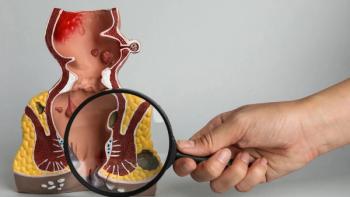
Striving to Answer the Big Questions in Brain Cancer Care
Andrew S. Chi discusses some of the exciting new advancements for treatment of brain cancer.
For years, brain cancer has been difficult to treat. After letdowns in prior research, immunotherapeutics and novel targeted therapy are providing a brighter future to patients with gliomas.
Recently, the PD-1 inhibitor Opdivo demonstrated early signs of activity as a monotherapy for patients with recurrent glioblastoma in the CheckMate-143 trial. Furthermore, other immune-based therapies targeted against EGFRvIII have shown exceptional signs of activity and tolerability. Adding to the immunotherapy excitement, targeted therapies directed against IDH also represent a potential new treatment paradigm.
What are some of the biggest unanswered questions in brain cancer currently?
To put these advancements into perspective, CURE spoke with Andrew S. Chi, head of Neuro-Oncology at NYU Langone's Laura and Isaac Perlmutter Cancer Center, on recent developments in the treatment paradigm for patients with brain cancer, including his recent study into mutant IDH1 gliomas and the role of the NAD metabolite.The biggest question is “why hasn’t anything worked.” It’s a difficult question to answer and it poses a problem with the outcomes of all our different diseases. There has been an enormous amount of research into the biology of these tumors and there has been a significant amount of understanding that we have developed, yet that has not translated into clinical benefit or patient outcomes.
The real question is how we are going to get things that we understand to translate into better outcomes for patients. Whether that is discovering new therapies, or maybe we have to take a fresh look at the things we are researching in the laboratory. Maybe the drugs that we have will be effective and we just need to find the right way to test these drugs.
Do you see any possibilities with immunotherapy in brain cancer?
We have so much knowledge about the biology of these tumors and a proliferation of different drugs and therapies that have been developed over the past few years are working in other cancers. We have to figure out how to get these drugs to work in brain cancers. We have a paradigm and a framework to be able to think through this and be able to solve that problem.Immunotherapies are really riding a big wave in research and therapeutic development and they are generating a lot of excitement in a lot of cancer types, as well as brain cancer. When these immunotherapies work in other cancers, they have worked phenomenally well.
The excitement for brain cancers has been high because, when you look at the biology of these tumors, there is significant rationale that these immunotherapies should work. Whether it be vaccines or immune checkpoint inhibitors, there has been a tremendous amount of research into the immunobiology, gliomas in particular, that suggests that some of these immune therapies should work.
Would chimeric antigen receptor (CAR) T-cell therapy possibly impact the treatment paradigm of brain cancer?
Right now in the field of brain cancers, many of these immunotherapies are currently being tested in clinical trials or are just starting to be tested. These trials are looking at glioblastoma and other gliomas.That paradigm is creating excitement as well in gliomas. CAR involves designer T-cells that hone in one specific mutation or abnormal proteins on the surface of glioma cells, and ones that are only on glioma cells and not normal brain cells. This would be a very specific attack and one without much toxicity.
Some of the problems we need to overcome in brain cancer therapy are if the T-cells are actually getting into the brain and actually getting into the tumor. Another problem we deal with is that maybe the T-cells that are designed to hit an abnormal molecule aren’t because those specifically abnormalities might not be on every single glioma cell.
What we are beginning to understand about glioblastoma, and gliomas in general, is that they are very heterogeneous. So some parts of the tumor are very different than other parts on a molecular and biological level. If you design a T-cell to attack one specific protein, then you may not get the effectiveness of essentially killing the entire tumor.
CAR T-cell therapy has incredible promise and we hope that it leads to better patient outcomes down the line, but it also highlights some of the difficulties that we have in brain tumor development and therapeutic development. How do we get drugs into the brain? Or to the tumor where we want it?
How does personalizing treatment play a role in brain cancer?
How do we deal with the issue of tumor heterogeneity, especially considering that heterogeneity is not specific to any patient’s tumor. We understand that not all gliomas are one specific disease — they are all very different diseases defined by very specific molecular subtypes.Malignant glioma was one disease up until the late '90s or early 2000s, and we are understanding now that there are very clearly different disease entities defined by very specific molecular and genetic markers. Those different disease entities have dramatically different patient outcomes, meaning the natural history of each one of those different disease entities is quite different and is really based on those genetic factors. A patient’s response to therapy might also be quite different based on those factors.
This really highlights the paradigm of personalized therapy. When we understand that these are not the same disease, we really have to tailor our treatments specifically to each one of those disease subtypes. When we say “tailor our therapy,” that isn’t just about picking drugs that will work against a patient’s tumor.
We need to understand that these are different tumors, understand how they differ, and understand why we would manage them differently. There are some subtypes that we know from diagnosis, irrespective of therapy, a patient will likely live longer than patients with other types of gliomas. That might frame how we approach that patient’s care. Should we be extremely aggressive from the beginning? Should we wait and see? Should we be more aggressive with the surgery and give them the best chance at long term outcome?
Can you give an example of certain targeted therapies that only work in certain forms of brain cancer?
These are all factors independent of therapy we have to take into account when we personalize therapy for patients.One of the subtypes of glioma that has emerged over the past 5 years are ones defined by the mutation of either IDH1 or IDH2. These are genes and proteins that are a core part of a cell’s metabolism and the mutations of IDH were discovered in late 2008. It took a while for us to understand the biological and clinical impact of that mutation in gliomas and other cancers. What we initially understood about gliomas with IDH1 mutations were that they were a subtype with a very distinct phenotype. They had a distinct look on MRI scans, they occurred between the ages of 20 and 40 in most patients, and they had a slightly slower natural history meaning they would grow but at a slower rate.
That set the framework for having the perspective that these are very biologically different tumors and that we need to understand what the biology of these tumors are before we can really learn how to treat them. They are going to be very different than tumors without IDH1 mutations, so it wouldn’t make much sense to apply the same therapies to both tumors.
I took the approach, specifically in terms of trying to find an approach that works against the tumors, of looking at the metabolism of these IDH1 gliomas. IDH1 and IDH2 are metabolic genes, so presumably they are altering the cell’s metabolism in some way to give them the advantage of growth. We suspected that the mutant IDH1 protein was engineering the cell’s metabolism to allow it to grow at a faster rate than a normal cell.
We metabolically profiled IDH1 mutant gliomas in several different ways, and we also perturbed their metabolism. We assessed the changes and found that these IDH mutant gliomas had very specific changes in very specific metabolites as compared to other tumors.
What came out of all that research was that we identified one very specific metabolite that was quite different in tumors with IDH1 mutations than other cancers called NAD. Ultimately, what we tried to do with NAD was manipulate NAD and see what the effect was on the tumor. We took drugs that are known to deplete NAD from the tumor and it turned out that, in the dish, and we found that they potently killed IDH1 mutant glioma cells. These drugs did not have any effect on tumors that were not IDH1 mutant.
Are there any drugs that specifically target IDH now?
What we found was essentially a specific therapy that was going to work only in gliomas with IDH1 mutations. That’s the work we are doing in the laboratory here, and we hope to that take that work into a clinical trial.There are drugs that directly target the mutant IDH protein and those are also in clinical trials. They are currently being developed by different companies, though how effective they are remains to be seen.
The research that came out of our lab was that we discovered a class of drugs that don’t directly inhibit the abnormal IDH protein itself. What we discovered what that the IDH protein was changing metabolism in a specific way and we found a class of drugs that targets that altered metabolism.
So what we found was essentially another way to target IDH mutant gliomas specifically without having to hit the mutant protein itself. Right now there is a direct IDH1 inhibitor out in the clinic, as well as a vaccine that specifically targets mutant IDH1 protein that is being developed.




